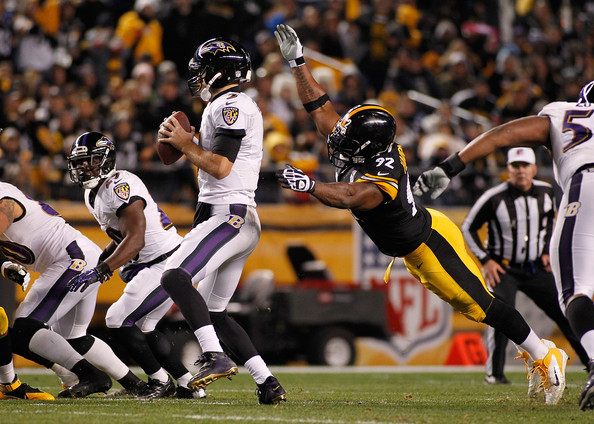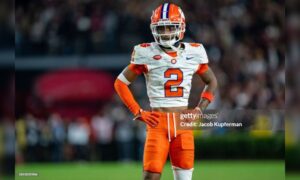The Pittsburgh Steelers 2014 season came to end Saturday night with a 30-17 loss to the Baltimore Ravens in the AFC Wild Card Game and Pro Football Focus now has their initial set of grades from the game compiled.
Offensively for the Steelers tackle Kelvin Beachum (1.0) was the highest graded player. A 1.0 is nothing to write home about, however, and neither was the play of the offense Saturday night.
The other five Steelers offensive linemen that played Saturday night all finished with a grades of (-1.4) or worse. Of that group, guard David DeCastro (-2.8) had the worst grade and he can probably thank Ravens defensive tackle Brandon Williams for that. Quietly, Williams has become one of the best defensive tackles in the game. In case you’re curious, Williams’ (3.2) grade was his second-highest of the season.
Tackle Marcus Gilbert (-2.6) wasn’t too far behind DeCastro thanks to him giving up a sack and five hurries in the game before leaving the game injured late in the fourth quarter.
Defensively for the Steelers it was linebacker James Harrison (5.5) who graded out the best. While he failed to record a sack Saturday night, PFF has Harrison down for seven hurries in the game.
Defensive end Cameron Heyward (2.3) was a distant second to Harrison as far as grades go and rookie nose tackle Daniel McCullers (1.9) registered his best PFF grade of the season in the loss.
On the other end of the grade spectrum, it’s not surprising that safety Mike Mitchell (-4.2) graded out as the Steelers worst defensive player against the Ravens. Not only did Mitchell play poorly against the pass, he also failed to offer good run support thanks to his poor angles and sloppy tackling technique.
Thanks mostly to him missing three tackles Saturday night, linebacker Lawrence Timmons also graded out poorly in the eyes of PFF.
PFF may alter these grades slightly when the all-22 tape is released, but after already going through the game once myself, it’s hard to argue with many of their early observations.








